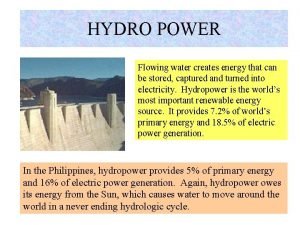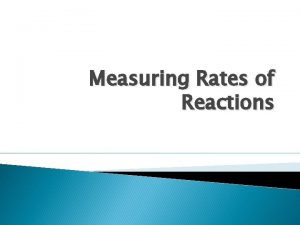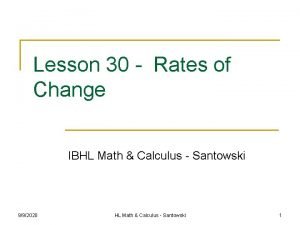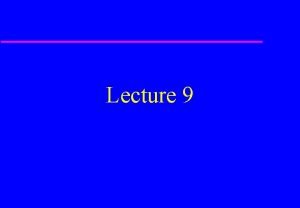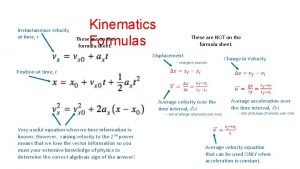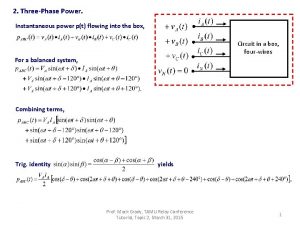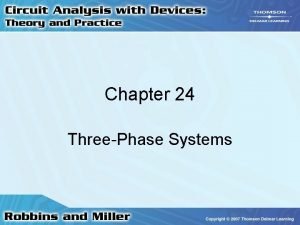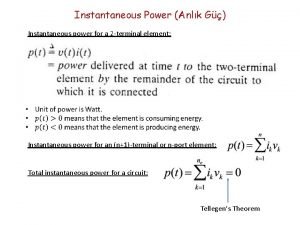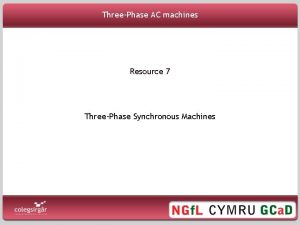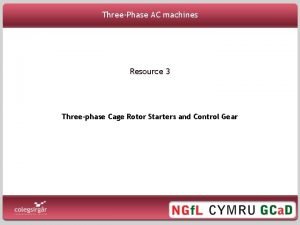2 ThreePhase Power Instantaneous power pt flowing into







- Slides: 7

2. Three-Phase Power. Instantaneous power p(t) flowing into the box, Circuit in a box, four-wires For a balanced system, Combining terms, Trig. identity yields Prof. Mack Grady, TAMU Relay Conference Tutorial, Topic 2, March 31, 2015 1

2. Three-Phase Power, cont. Letting x = (2ωt+δ+Θ) and expanding the time varying term, then expanding yields cancel each other Instantaneous three-phase power is constant – thus, smooth running machines! Prof. Mack Grady, TAMU Relay Conference Tutorial, Topic 2, March 31, 2015 2

2. Three-Phase Power, cont. Strong 120 Hz torque Analogous to a piston engine with an infinite number of cylinders Prof. Mack Grady, TAMU Relay Conference Tutorial, Topic 2, March 31, 2015 3

2. Three-Phase Power, cont. Prof. Mack Grady, TAMU Relay Conference Tutorial, Topic 2, March 31, 2015 4

2. Three-Phase Power, cont. Balanced Three-Phase System Prof. Mack Grady, TAMU Relay Conference Tutorial, Topic 2, March 31, 2015 5

2. Three-Phase Power, cont. Balanced Three-Phase System Line currents Ia, Ib, and Ic Delta currents Iab, Ibc, and Ica Prof. Mack Grady, TAMU Relay Conference Tutorial, Topic 2, March 31, 2015 6

2. Three-Phase Power, cont. c c Ic Ic Z 3 Z 3 Z n Z Ib – Ia 3 Z Vab a b Z Ib – Vab + + Ia Balanced three-phase systems, no matter if they are delta connected, wye connected, or a mix of wye and delta, are easier to solve if you follow these steps: • • • Convert the entire circuit to an equivalent wye with a grounded neutral. Draw the one-line diagram for phase a, recognizing that phase a has one third of the P and Q. Solve the one-line diagram for line-to-neutral voltages and line currents. If needed, compute line-to-neutral voltages and line currents for phases b and c using the ± 120° relationships. If needed, compute line-to-line voltages and delta currents using the and ± 30° relationships. Prof. Mack Grady, TAMU Relay Conference Tutorial, Topic 2, March 31, 2015 7
